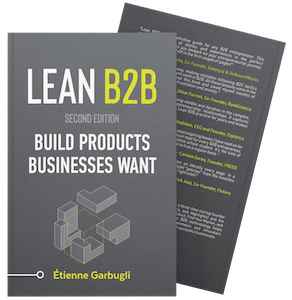Startups are risky. As many as 90% of them fail.
A key reason why startups fail is that the early days of new ventures very closely resemble research and development (R&D). And sadly, R&D projects don’t always work.
Maybe the product isn’t perceived as valuable. Maybe the market isn’t there. Maybe there aren’t enough customers to sustain a business. Whatever the reason, it’s critically important to tilt the odds in your favor when you start up.
You can do that by targeting an industry you know well or maximizing your runway, but there are many other ways to shorten a startup’s Time to Product/Market Fit (TTPMF)–the time needed to reach PMF.
One such way is to buy a startup, instead of starting from scratch.
Serial entrepreneur Rob Walling estimates that acquiring a product that’s already showing signs of PMF can put you 12–18 months ahead.
If you have the budget, this can be a game changer. You can greatly reduce your Time to Product/Market Fit by buying a product that has PMF.
The question is: What’s the value of 12 to 18 months of development and iterations for you?
Buy a Startup? But Which One?
In this post, I’ll take as assumption that you won’t be buying a business with significant revenue. If that’s something you can afford, then your process may be quite different.
Sites like MicroAcquire list products generating real revenue. They may or may not have reached PMF. The owners of these businesses may lack the desire or skillset to bring the products further along their journeys. This can be a good starting point for your search.
Before you buy a startup, however, you’ll want to do due diligences. Consider:
- Trialing the product in depth: How long does it take to implement the product? How long does it take to experience the core product value the first time? How long does it take to experience the value again? How easy to use is the product? Consider testing the product with real users. Services like UserTesting or Loop11 can help you organize remote user testing sessions.
- Interviewing users and customers: You can find a product’s customers through review sites like G2, Capterra, GetApp, or TrustRadius, or via social media. Try to understand the perceived value from their perspective, and whether they view the product as a painkiller or a vitamin. Consider taking it even a step further by going through the “Sean Ellis PMF test“, asking the test’s core questions through interviews, or via a survey.
- Selling the product: Believe it or not, you can sell a product that isn’t yours. Find the right people to sell to, get their numbers, and start calling. Try to close them on a demo. This will teach you about the value proposition, the objections, the alternatives, the needs and the goals. Is the product difficult to sell? What seems to be holding back growth?
- Doing a deep dive on the competitors: Run though the list of alternatives identified before. How does the product compare to each of these alternatives? What are the gaps? Could the product win the market?
- Doing a deep dive on metrics: The more due diligences come along, the more opportunities you’ll have to confirm your learnings with the seller. Do a deep dive on retention. Is the product being used daily? Weekly? Once a month? Every now and then? What’s the churn like? How does the product grow? Could you improve the customer acquisition? Dive deep in the code base and the financial data. Is this a good startup to buy?
Pick a product that fits your vision and interests. When you buy a startup, you want to be able to hit the ground running right after the purchase.
What to Do With the Startup You Bought
You don’t want the product you buy to be the end state. Once your new product hits the market, you want to be learning, adjusting, improving, and refining your positioning until you’re able to find your own market fit.
Consider getting back to customer discovery to discover the opportunities, and come to your own conclusions.
As Basecamp co-founder Jason Fried says (with minor edits from my part 😛): “Copying [ Buying ] skips understanding. Understanding is how you grow. You have to understand why something works or why something is how it is. When you copy [ buy ] it, you miss that. You just repurpose [ have ] the last layer instead of understanding all the layers underneath.”
To learn, you can use a process similar to the one laid out in my book Find Your Market. The process will help you discover the optimal positioning for your new acquisition.
Buy a startup if you can afford it. You’ll be able to reach PMF faster this way.
More on Buying Startups
- Buy Then Build: How Acquisition Entrepreneurs Outsmart the Startup Game
- Innovation Expert Daniel Almodovar on Why Companies Can’t Just “Wait and Buy” Startups
- [ Interview ] Testimonial Hero Founder Sam Shepler on Building and Scaling a Service Business in B2B
Download the First 4 Chapters Free
Learn the major differences between B2B and B2C customer development, how to think about business ideas, and how to assess a venture’s risk in this 70-page sampler.
Working on a B2B Startup?
Join our free email course to learn all you need to know:


